hudson river
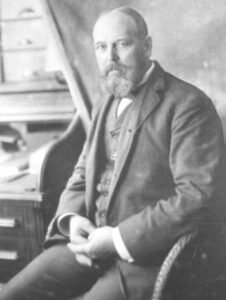
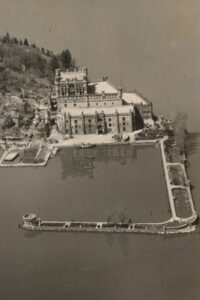 We don’t often think of the United States having castles, but some do exist. Most are not considered true castles, but are rather country houses, follies, or other types of buildings built to give the appearance of a castle. In architecture, a folly is a building constructed primarily for decoration, but suggesting through its appearance some other purpose, or of such extravagant appearance that it transcends the range of usual garden buildings. Castles seem like almost ancient history items to most of us, and when it came to the United States, many people thought of the Old West and homestead type dwellings. Nevertheless, there are a few real castles here in the United States, even if we don’t have royalty here.
We don’t often think of the United States having castles, but some do exist. Most are not considered true castles, but are rather country houses, follies, or other types of buildings built to give the appearance of a castle. In architecture, a folly is a building constructed primarily for decoration, but suggesting through its appearance some other purpose, or of such extravagant appearance that it transcends the range of usual garden buildings. Castles seem like almost ancient history items to most of us, and when it came to the United States, many people thought of the Old West and homestead type dwellings. Nevertheless, there are a few real castles here in the United States, even if we don’t have royalty here.
One such castle is Bannerman Castle in New York. The castle is located on Pollepel Island, about 50 miles north of New York City, on the Hudson River. The castle is in serious disrepair, but the Bannerman Castle Trust, Inc is trying to shore up the buildings so they don’t deteriorate further. The analysis that has been done indicates that 5 out of the 7 buildings on the island could be shored up. The others are too far gone. The castle has a strange history, and I suppose some would debate it’s claim as a true castle. The castle was built by Frank Bannerman VI over a period of 17 years. The island’s buildings were personally designed by Bannerman without professional help from architects, engineers, or contractors. The island has buildings, docks, turrets, garden walls, and a moat in the style of old Scottish castles. That was his passion. He loved Scottish castles and built his castle with a Scottish flare. All of the buildings are elaborately decorated, from biblical quotations cast into all fireplace mantles, to a shield between the towers with a coat of arms, and a wreath of thistle leaves and flowers.
Bannerman’s family immigrated to America in 1854, when he was three. They settled in Brooklyn, New York, where his father established a business selling flags, rope, and other articles acquired at Navy auctions. He was a patriotic man, who joined the union army during the Civil War. At that time young Frank began running the business. He was 13 years old. When the Civil War ended, the US government auctioned off military goods by the ton, mostly to be scrapped for their metal. It was young Frank who saw the importance of these materials, and it was his wise purchases that earned him the moniker “Father of the Army-Navy Store.” He could see that much of what was being sold had a market value higher than scrap. Under the guidance of the younger Bannerman, the Bannerman family became the world’s largest buyer of surplus military equipment. By this time, their storeroom and showroom took up a full block at 501 Broadway. Bannerman made his store into a type of museum/store. It opened to the public in 1905. Of it, the New York Herald said, “No museum in the world exceeds it in the number of exhibits.”
Frank was very prosperous, and it was during a business trip to Ireland that he met his future wife, Helen Boyce. They had three children. At the close of the Spanish American War, Frank Bannerman purchased 90 
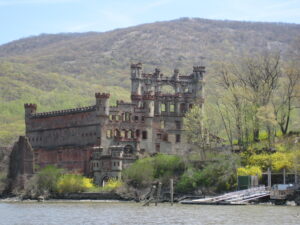 percent of all captured goods in a sealed bid. After that, it became necessary to find a secure place to store their large quantity of very volatile black powder. His son, David saw Pollepel Island, in the Hudson, and Frank Bannerman purchased it in 1900. Following the purchase, the building of the castle began. Today, the island is owned by the state of New York, and at this time visits are prohibited until the buildings can be made safer.
percent of all captured goods in a sealed bid. After that, it became necessary to find a secure place to store their large quantity of very volatile black powder. His son, David saw Pollepel Island, in the Hudson, and Frank Bannerman purchased it in 1900. Following the purchase, the building of the castle began. Today, the island is owned by the state of New York, and at this time visits are prohibited until the buildings can be made safer.
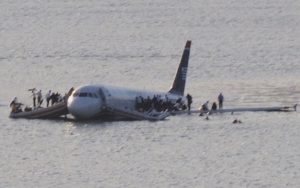
 Most of us have heard about the bird strike that brought down US Airways Flight 1549 in the Hudson River off Manhattan, after both engines were disabled by a bird strike on January 15, 2009. The birds were just flying along…minding their own business. Then suddenly, there was a plane…right in their path. So my thought is what were the birds thinking in that instant before their death. I don’t mean to sound morbid, but I do believe animals can think, and like humans, they might be thinking, “Oh boy…this is it!!” And it was.
Most of us have heard about the bird strike that brought down US Airways Flight 1549 in the Hudson River off Manhattan, after both engines were disabled by a bird strike on January 15, 2009. The birds were just flying along…minding their own business. Then suddenly, there was a plane…right in their path. So my thought is what were the birds thinking in that instant before their death. I don’t mean to sound morbid, but I do believe animals can think, and like humans, they might be thinking, “Oh boy…this is it!!” And it was.
In the world of NASA Kennedy Space Center in Florida, birds are a part of the territory too. NASA usually takes their feathered intruders in stride, and in turn, the birds provide an extra level of interest in launch photography. For NASA the bird problem can be largely attributed to the nearby Merritt Island National Wildlife Refuge’s 310 species of birds that love to swoop through for a visit. Most of the time it’s no big deal, but when they start poking around during a launch, it can be a bit more problematic.
Many of the bird species are not a problem, but one particular type of bird is causing concern for NASA…vultures. In 2005, they had a bird hit Discovery’s external tank during the launch. A vulture’s average weight ranges from 3 to 5 pounds, so a strike at a critical point on the shuttle…like the nose or wing leading thermal protection panels could cause catastrophic damage to the vehicle. The foam chunk that fatefully struck Columbia’s wing in 2003 weighed only 1.7 pounds. Even with the space shuttle launches cancelled, there are still launches at the Kennedy Space Center, and something needs to be done to protect the astronauts, rockets, and equipment, as well as the birds from the harm that occurs when nature collides with NASA. That said, NASA designed special radar to track any vultures around Launch Pad 39B during the countdown to liftoff of Space Shuttle Discovery on mission STS-121. NASA is also trying to clean up anything, like “roadkill” around Kennedy in an effort to prevent the birds being drawn to the area. They are removing the easy food source that keeps the birds around.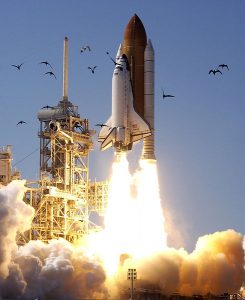

Vultures search for food during the day, often circle high into the Florida sky, floating on the thermal gradients, getting a birds-eye view of food sources. To mitigate the danger, an avian radar system known as “Aircraft Birdstrike Avoidance Radar” has been installed to track their movement around the launch area and relay the data to launch control experts. The system was developed by a company called DeTect of Panama City, Florida, which primarily has served the commercial aviation industry and the military. Hopefully the radar can give the launch team locations in real-time so decisions can be made to avoid bird strikes in the future.
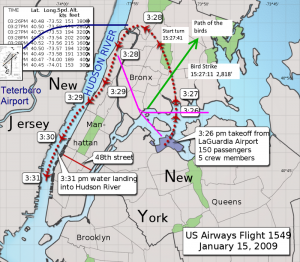 On January 15, 2009, the whole world was captivated by the story of a miracle on the Hudson River. A pilot named Captain Chesley Burnett Sullenberger III, affectionately known as Sully, averted disaster after an unusual bird strike…meaning a flock of geese hit his plane, disabling both engines. Hitting a bird isn’t so uncommon, but to hit a flock can bring down a plane, and that was the situation Sully found himself in as he piloted US Airways Flight 1549 out of La Guardia Airport that morning. Just 60 seconds after takeoff, the horrific strike occurred.
On January 15, 2009, the whole world was captivated by the story of a miracle on the Hudson River. A pilot named Captain Chesley Burnett Sullenberger III, affectionately known as Sully, averted disaster after an unusual bird strike…meaning a flock of geese hit his plane, disabling both engines. Hitting a bird isn’t so uncommon, but to hit a flock can bring down a plane, and that was the situation Sully found himself in as he piloted US Airways Flight 1549 out of La Guardia Airport that morning. Just 60 seconds after takeoff, the horrific strike occurred.
Sully, a former fighter pilot with decades of flying experience, knew he was in a lot of trouble. After trying to restart the engines…a plan that failed, he made the mayday call. When air traffic controllers instructed the seasoned pilot to head for nearby Teterboro Airport, he calmly informed them that he was “unable” to reach a runway. “We’re gonna be in the Hudson,” he said simply, and then told the 150 terrified passengers and five crew members on board to brace for impact. I’m sure there were those who thought he should have tried for the airport, but if he had, he would have flown his plane into the buildings that were in the way. They had no chance of making it to Teterboro or back to La Guardia.
I’m sure the air traffic controllers and the passengers all thought that they had no chance of survival in the Hudson River either, but they were wrong. Ninety seconds later, Captain Sully quietly glided his Airbus 320 over the George Washington Bridge and onto the Hudson River midway between Manhattan and New Jersey. The flight attendants quickly instructed the passengers to put on life jackets and head for the exits over the wings. In minutes, 150 passengers and 5 crew members found themselves standing in ankle to knee deep river water on the wings of the plane that had, only moments before, been flying gracefully over the Hudson.
Of course, a commercial airliner can’t land on the busy Hudson River unnoticed. Immediately, the commuter ferries, sightseeing boats, and rescue vessels raced to the scene to pluck the frightened passengers fro a potential watery grave. The landing was so smooth that there were only two broken ribs, and minor injuries or hypothermia. One survivor suffered two broken legs and others were treated for minor injuries or hypothermia, but no fatalities occurred. After walking up and down the aisle twice to ensure a complete evacuation, Sullenberger was the last to leave the sinking plane. There were no fatalities, a concern that Sully took very seriously. He simply could not take a deep breath until he was told that all 155 souls had survived. For his actions, Sully received a slew of honors for his actions, including an invitation to Barack Obama’s presidential inauguration and resolutions of praise from the U.S. Congress.
Sully was now famous, with all that went with it, but he felt the need to retire, and find what really mattered to 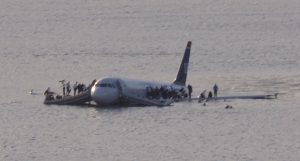 him. Yes, he would always be thankful that all 155 souls on US Airways Flight 1549 had survived, and they would always be grateful to him for having the skill to land safely in the Hudson, but he needed to focus on his family and his future. I don’t think he was afraid to fly anymore, but he just needed to get his priorities straight. Sully published a book about his childhood, military background and career entitled “Highest Duty: My Search for What Really Matters.” He retired from US Airways after 30 years in the airline industry on March 3, 2010, and has since devoted his time to consulting, public speaking and advocating for aviation safety.
him. Yes, he would always be thankful that all 155 souls on US Airways Flight 1549 had survived, and they would always be grateful to him for having the skill to land safely in the Hudson, but he needed to focus on his family and his future. I don’t think he was afraid to fly anymore, but he just needed to get his priorities straight. Sully published a book about his childhood, military background and career entitled “Highest Duty: My Search for What Really Matters.” He retired from US Airways after 30 years in the airline industry on March 3, 2010, and has since devoted his time to consulting, public speaking and advocating for aviation safety.
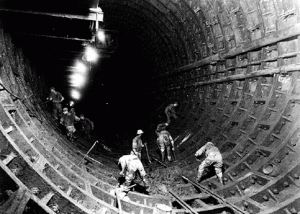 Living in New Jersey, does not necessarily mean that people work or shop in New Jersey. Since Manhattan is just across the Hudson River, many people work and shop there…who wouldn’t, given the chance. I suppose that at some point it was decided that there might soon be too many bridges over the river, and maybe a tunnel under it could be built. The first known underwater tunnel to be built was the Thames Tunnel, built beneath the River Thames in London, connecting Rotherhithe and Wapping. It was built between 1825 and 1843 using Marc Isambard Brunel’s and Thomas Cochrane’s newly invented tunneling shield technology, by Brunel and his son Isambard Kingdom Brunel. So the idea was not new, and in fact, not even new to New York City. The Port Authority had acquired the Holland Tunnel in 1930, and soon after New York and New Jersey authorized the agency to proceed with its plan to build what was then called the Midtown Hudson Tunnel or the Midtown Vehicular Tunnel. Creating a 1.5-mile-long structure, even above ground, would be no small accomplishment, but to build it under a riverbed was a monumental task. Hundreds of huge iron rings, each weighing 21 tons, had to be assembled and bolstered together on site to form the lining of the tunnel. At some point it was decided that Midtown Vehicular Tunnel was not grand enough…so in the spirit of patriotism they named it the Lincoln Tunnel, because of the George Washington Bridge. On this day, December 22, 1937 the 8,216 foot center tube opened in 1937, followed by the 7,482 foot north tube in 1945. The 8,006 foot south tube was the last to open, in 1957.
Living in New Jersey, does not necessarily mean that people work or shop in New Jersey. Since Manhattan is just across the Hudson River, many people work and shop there…who wouldn’t, given the chance. I suppose that at some point it was decided that there might soon be too many bridges over the river, and maybe a tunnel under it could be built. The first known underwater tunnel to be built was the Thames Tunnel, built beneath the River Thames in London, connecting Rotherhithe and Wapping. It was built between 1825 and 1843 using Marc Isambard Brunel’s and Thomas Cochrane’s newly invented tunneling shield technology, by Brunel and his son Isambard Kingdom Brunel. So the idea was not new, and in fact, not even new to New York City. The Port Authority had acquired the Holland Tunnel in 1930, and soon after New York and New Jersey authorized the agency to proceed with its plan to build what was then called the Midtown Hudson Tunnel or the Midtown Vehicular Tunnel. Creating a 1.5-mile-long structure, even above ground, would be no small accomplishment, but to build it under a riverbed was a monumental task. Hundreds of huge iron rings, each weighing 21 tons, had to be assembled and bolstered together on site to form the lining of the tunnel. At some point it was decided that Midtown Vehicular Tunnel was not grand enough…so in the spirit of patriotism they named it the Lincoln Tunnel, because of the George Washington Bridge. On this day, December 22, 1937 the 8,216 foot center tube opened in 1937, followed by the 7,482 foot north tube in 1945. The 8,006 foot south tube was the last to open, in 1957.
On average, the Lincoln Tunnel sees upwards of 120,000 cars passing through every day. It is one of the busiest roadways in the country. On the afternoon of September 8, 1953, the tunnel became famous when two men, who had attempted to rob a house in South Orange New Jersey were chased away by its residents. Their car’s license plate was relayed to the police. Peter Simon and John Metcalf escaped into the Lincoln Tunnel and were spotted by transit authorities upon entering. A car chase ensued amid the traffic through the tunnel. Police commandeered a delivery truck and fired shots at the getaway car as it swerved around other vehicles. In all 28 shots were fired, and the driver, Peter Simon, was shot in the head about three quarters of the way to the other side of the tunnel. The gunfight was reported by The New York Times the next morning.
The Hudson River current has historically stayed close to the edge of Lower Manhattan, but with the construction of Battery Park City, which juts out into the river, part of the current has been rerouted. Its new location brings it more toward the river’s center and it’s uncovering much of the soil lying on top of the walls and ceiling of the Tunnel. As of 2009, some parts of the tunnel’s walls have seen a soil coverage decrease of about 25%, making them far more susceptible to shifting or cracking in the coming years. Not good!!
The process of building the 1.5 mile tunnel was grueling. To support the cavities that the workers dug out, they  installed a series of 21 ton iron rings set into the walls. The workers who dug the tunnels, called sandhogs, had to use a series of airlocks to depressurize and re-pressurize their bodies while entering a new section of the tunnel. With no ventilation, the air in each pressurized section got stale quickly. The excavation involved digging, lining the walls with the rings, pouring cement into every crease and crack to the keep the water out, and finally they moved along to the next airlock. Clifford Holland, chief engineer and namesake of the Holland Tunnel, died of a heart attack at 41 years of age due to immense stress during the construction, as well as the growing toxicity of the air in the airlocks. The Lincoln Tunnel faired better, with no reported work-related deaths.
installed a series of 21 ton iron rings set into the walls. The workers who dug the tunnels, called sandhogs, had to use a series of airlocks to depressurize and re-pressurize their bodies while entering a new section of the tunnel. With no ventilation, the air in each pressurized section got stale quickly. The excavation involved digging, lining the walls with the rings, pouring cement into every crease and crack to the keep the water out, and finally they moved along to the next airlock. Clifford Holland, chief engineer and namesake of the Holland Tunnel, died of a heart attack at 41 years of age due to immense stress during the construction, as well as the growing toxicity of the air in the airlocks. The Lincoln Tunnel faired better, with no reported work-related deaths.
 Years ago, many people thought that anyone who was trying to invent an airplane was pretty much insane…saying, that “if man were meant to fly, God would have given him wings” as their reasoning. I’m sure that those same people reiterated their thoughts on the matter, with each new plane crash…basically jumping on the chance to say, “I told you so!” Of course, these days, no one thinks that way, whether they like to fly or not. I guess a fear of flying and the idea that it is a foolish pipe dream aren’t the same things at all. Still, while man has proven over the years that flight is possible, and in fact mostly safe, there are some airplane crashes that that will forever be embedded in our minds. For me, of course, the one that I can picture in my mind at the drop of a hat, is Flight 232 that crashed in Sioux City, Iowa. This was the crash that took the life of my Great Aunt Gladys Pattan Byer Cooper. That pilot was so close to landing that plane safely, and would have, in fact, if the plane hadn’t put in one last effort to turn over due to a major loss of hydraulics. The resulting crash made me wonder how anyone survived…much less the 185 out of 296 people on board. The only reason they survived was the skill of the pilot…and much prayer.
Years ago, many people thought that anyone who was trying to invent an airplane was pretty much insane…saying, that “if man were meant to fly, God would have given him wings” as their reasoning. I’m sure that those same people reiterated their thoughts on the matter, with each new plane crash…basically jumping on the chance to say, “I told you so!” Of course, these days, no one thinks that way, whether they like to fly or not. I guess a fear of flying and the idea that it is a foolish pipe dream aren’t the same things at all. Still, while man has proven over the years that flight is possible, and in fact mostly safe, there are some airplane crashes that that will forever be embedded in our minds. For me, of course, the one that I can picture in my mind at the drop of a hat, is Flight 232 that crashed in Sioux City, Iowa. This was the crash that took the life of my Great Aunt Gladys Pattan Byer Cooper. That pilot was so close to landing that plane safely, and would have, in fact, if the plane hadn’t put in one last effort to turn over due to a major loss of hydraulics. The resulting crash made me wonder how anyone survived…much less the 185 out of 296 people on board. The only reason they survived was the skill of the pilot…and much prayer.
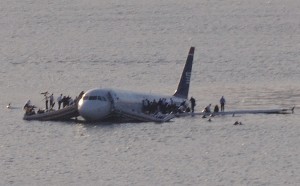
Another plane crash that has stayed in my memory was the crash of the Concorde, that occurred on this day, July 25, 2000. The Concord was a beautiful plane, and by far the most luxurious one of its time. I’m not sure there are even any planes that are more luxurious today…although the Boeing 787 might be. Dubbed the Dreamliner, it gives the indication that it might out class the Concorde. Nevertheless, in its day, the Concorde was the end all, beat all of airplanes. The thing that always amazes me is that sometimes it is the tiniest of things that ends up bringing down a plane. Much like the bird strike that brought down US Airways Flight 1549 on the Hudson River.
The Concorde was downed be a small piece of metal on the runway…that had fallen off of another plane. Air France Flight 4590 left DE Gaulle Airport for New York carrying nine crew members and 96 German tourists who were planning to take a cruise to Ecuador. That piece of metal shredded the tire that ran over it, throwing  pieces of the tire into one of the engines and fuel tanks, causing a disabling fire. The pilot had no idea what was about to happen, but just moments later the plane plunged to the ground near a hotel in Gonesse, France. A huge fireball erupted and all 105 people on the plane were killed immediately. The Concorde, the world’s fastest commercial jet, had enjoyed an exemplary safety record up to that point, with no crashes in the plane’s 31 year history. That crash, however, marked the beginning of the end for the Concorde. The last flight of the Concorde was on October 24, 2003. What was supposed to mark the first of a future of supersonic, fast paced air travel, was brought to a disappointing halt. Air travel has taken on a much slower pace since that time.
pieces of the tire into one of the engines and fuel tanks, causing a disabling fire. The pilot had no idea what was about to happen, but just moments later the plane plunged to the ground near a hotel in Gonesse, France. A huge fireball erupted and all 105 people on the plane were killed immediately. The Concorde, the world’s fastest commercial jet, had enjoyed an exemplary safety record up to that point, with no crashes in the plane’s 31 year history. That crash, however, marked the beginning of the end for the Concorde. The last flight of the Concorde was on October 24, 2003. What was supposed to mark the first of a future of supersonic, fast paced air travel, was brought to a disappointing halt. Air travel has taken on a much slower pace since that time.

